The Economics and Statistics Division maintains archives of previous publications for accountability purposes, but makes no updates to keep these documents current with the latest data revisions from Statistics Canada. As a result, information in older documents may not be accurate. Please exercise caution when referring to older documents. For the latest information and historical data, please contact the individual listed to the right.
<--- Return to Archive
For additional information relating to this article, please contact:
March 20, 2025EMPLOYMENT INSURANCE, JANUARY 2025 Monthly (January 2025 vs December 2024, seasonally adjusted regular beneficiaries)
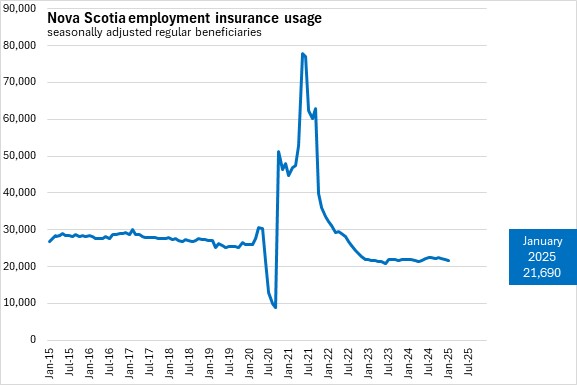
In January 2025, there were 21,690 Nova Scotians in receipt of regular employment insurance benefits (seasonally adjusted). Nova Scotia's seasonally adjusted regular employment insurance usage decreased by 170 (-0.8%) from December to January.
There were 477,640 Canadians that received regular employment insurance benefits in January 2025 (seasonally adjusted), a decrease of 2,040 (-0.4%) from December 2024.
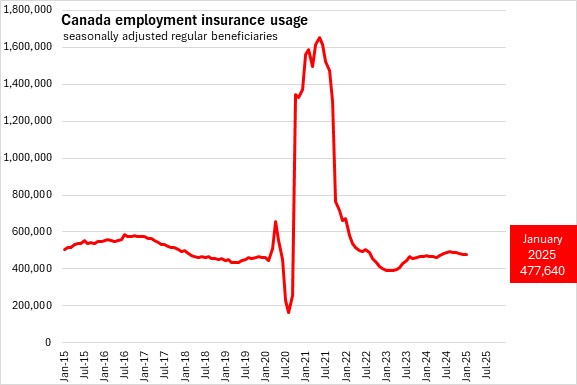
When compared to December 2024, six provinces reported lower employment insurance usage. Newfoundland and Labrador reported the largest decline while Manitoba reported the largest monthly rise in employment insurance usage.
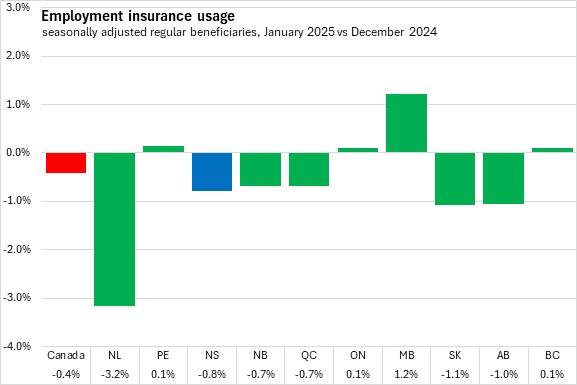
The number of employment insurance beneficiaries amounted to 3.9% of the labour force in Nova Scotia in January 2025. Nationally, the share of beneficiaries was 2.1% of the labour force. Newfoundland and Labrador had the largest share of beneficiaries of the labour force, while British Columbia had the lowest.
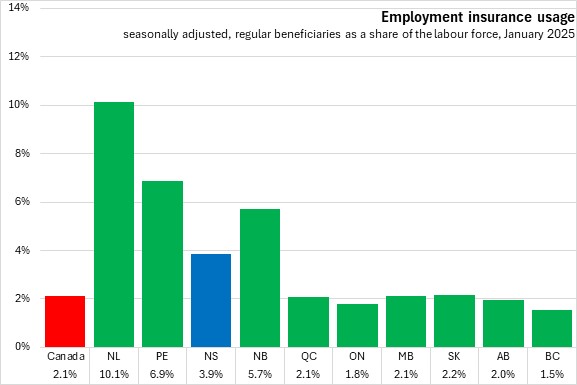
Year-over-year (January 2025 vs January 2024)
Compared to January 2024, Nova Scotia's employment insurance usage declined 0.7% (-150). National employment insurance usage increased 1.6% compared to January 2024. Seven provinces reported declines in employment insurance, with the fastest decline in Newfoundland and Labrador. The fastest rise in employment insurance usage was in Ontario.
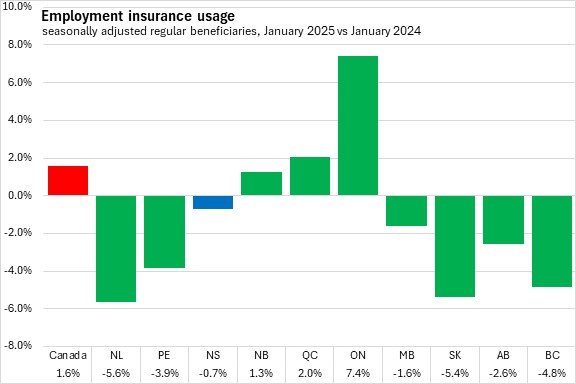
Use of employment insurance (as a share of the labour force) was lower for workers under age 55. Employment insurance use was higher for workers aged 55 and older. Across all age cohorts, male use of employment insurance was higher as a share of the labour force than female use of employment insurance.

Use of employment insurance was down for both males and females aged 15 to 24 and 25 to 54. Among those aged 55 and over, both males and females had higher usage of employment insurance compared to January 2024.
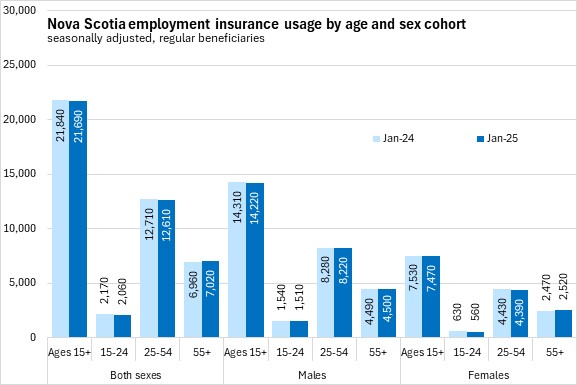

Comparing unadjusted regular beneficiaries for January 2025 against January 2024, use of employment insurance decreased for all counties except Digby, Annapolis, Lunenburg, Kings, Halifax, and Cumberland. Yarmouth county reported no change compared to January 2024. Shelburne and Cape Breton counties reported the fastest decline.
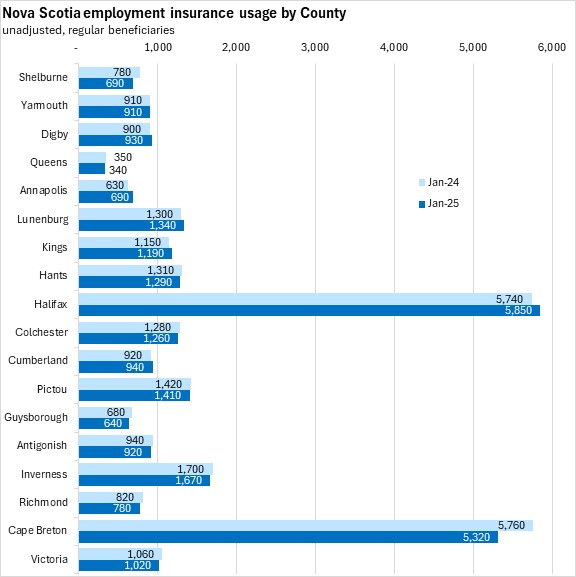
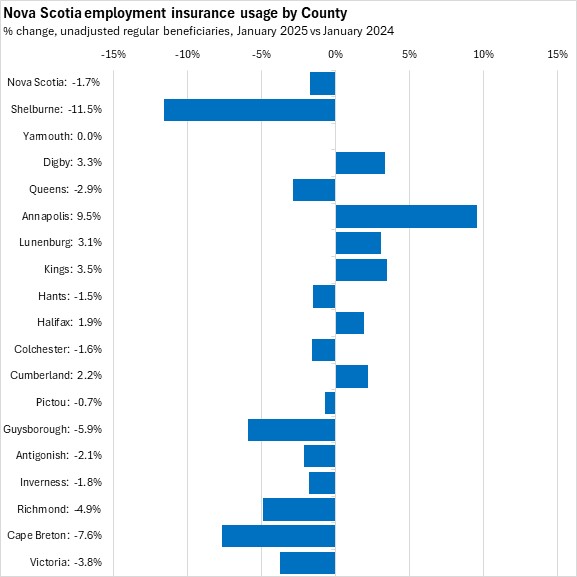
By occupation, employment insurance beneficiaries were more likely to be in technical trades/transportation, general trades, manufacturing/utilities, and helpers/labourers/other transport operators.
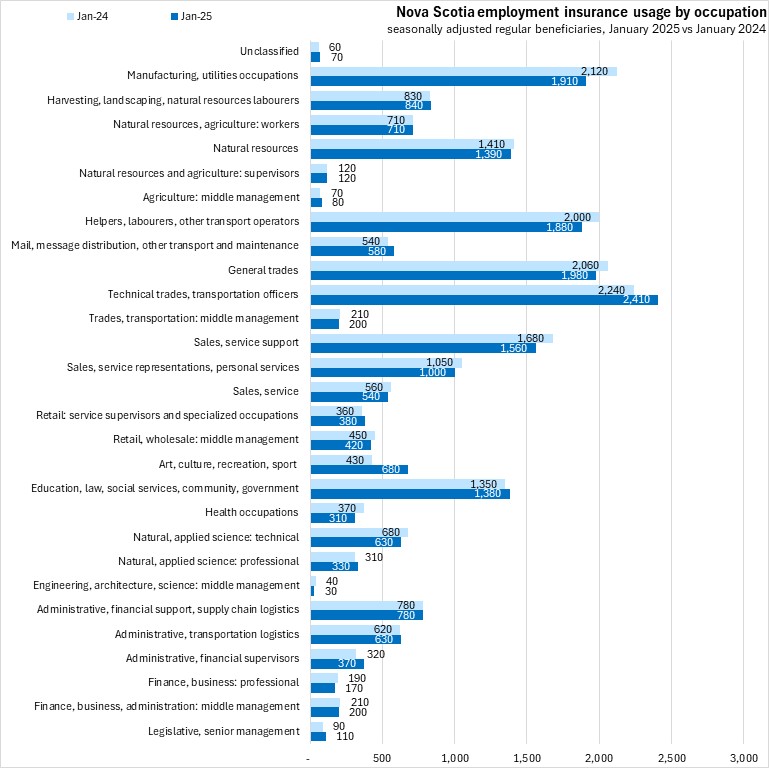
Over half of occupations reported declines in employment insurance usage compared to January 2024, with the fastest decline in engineering/architecture/science/middle management as well as health occupations. The fastest gain in employment insurance usage was in art/culture/recreation/sport and legislative/senior management.
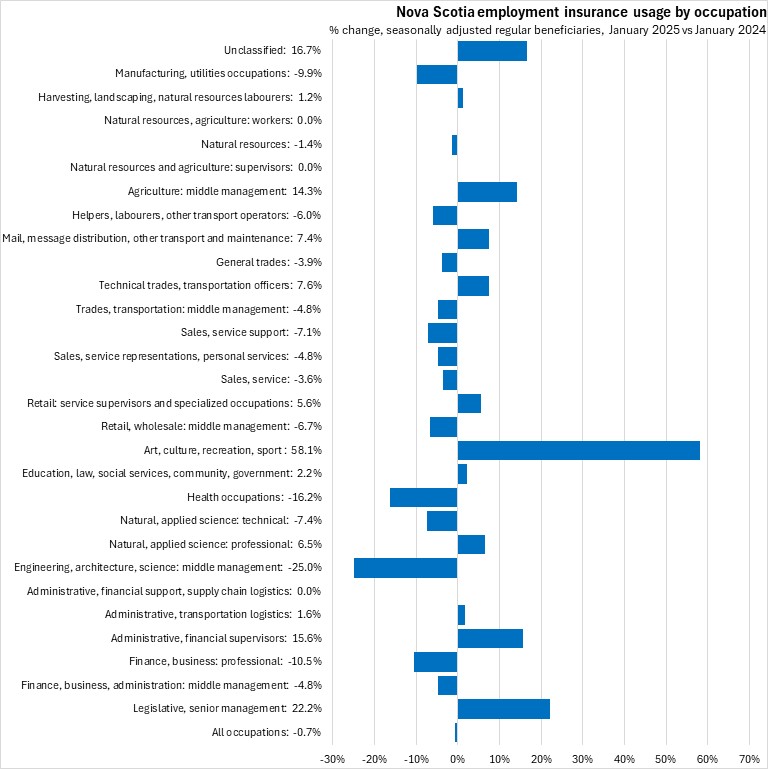
Source: Statistics Canada. Table 14-10-0011-01 Employment insurance beneficiaries (regular benefits) by province and territory, monthly, seasonally adjusted; Table 14-10-0323-01 Employment insurance beneficiaries by census division, monthly, unadjusted for seasonality; Table 14-10-0456-01 Employment insurance beneficiaries (regular benefits) by province, territory and occupation, monthly, seasonally adjusted; Table 14-10-0287-01 Labour force characteristics, monthly, seasonally adjusted and trend-cycle, last 5 months
<--- Return to Archive